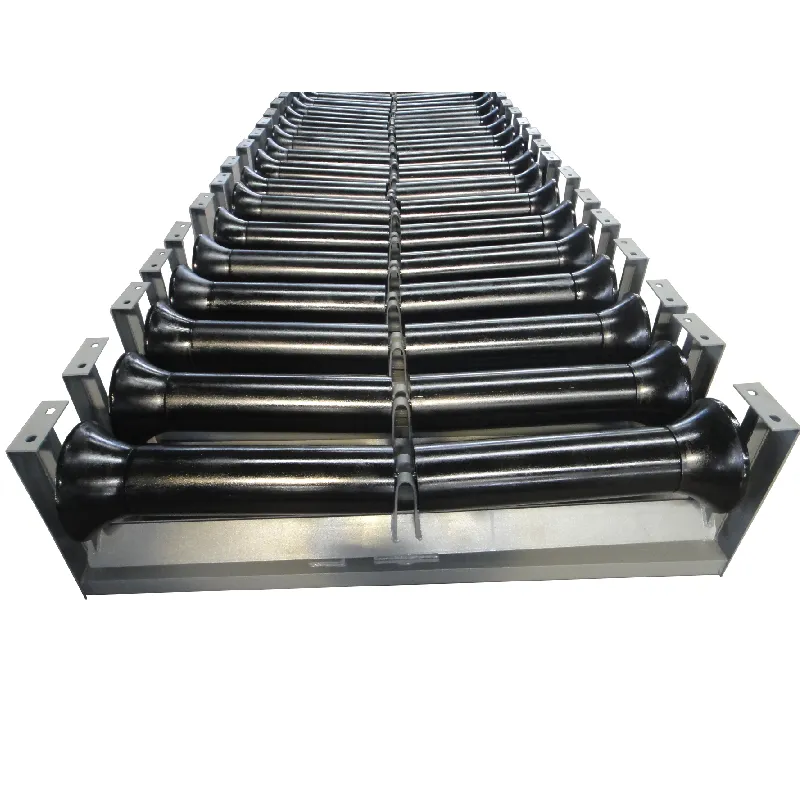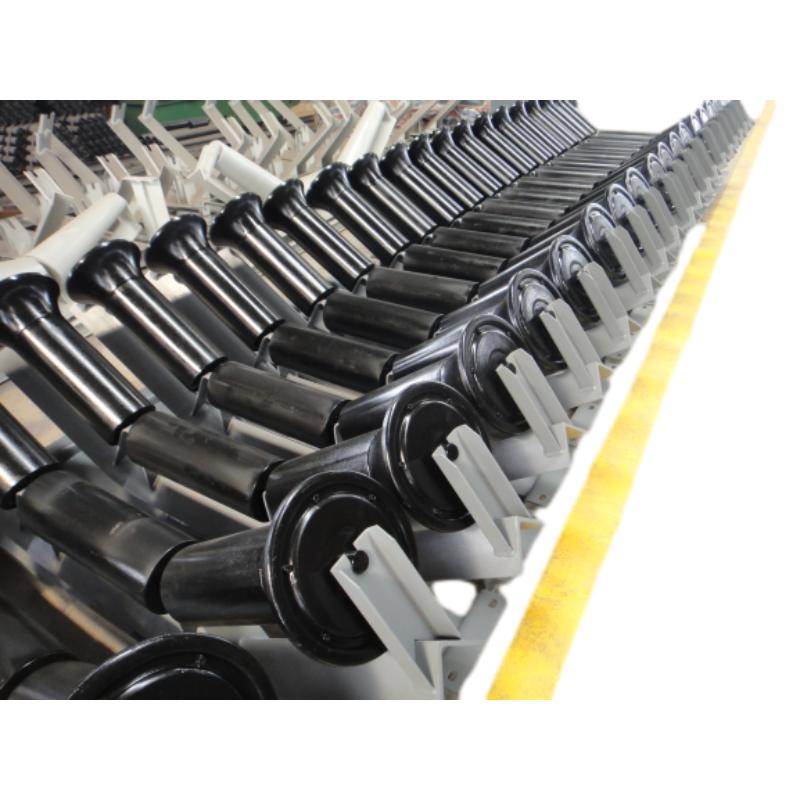Friction Aligning Idler-Yanshan Aohua|Belt Alignment, Friction Technology
Friction Aligning Idlers are critical components in modern industrial systems, designed to address common issues like belt misalignment and slippage in belt conveyor systems. Developed by Yanshan Aohua Machinery Equipment Manufacture Limited Company, this innovative product leverages the principles of idler curvature and friction to ensure optimal performance. With a patent number ZL201420424753.0, the Friction Aligning Idler stands out as a reliable solution for industries reliant on efficient material handling. This article explores the features, advantages, technical specifications, application scenarios, and company background of this essential machinery, supported by authoritative references from the National Institute of Standards and Technology (NIST).
Understanding the Friction Aligning Idler
The Friction Aligning Idler is a specialized type of idler roller engineered to correct belt running off and prevent belt damage and sideslip. Unlike traditional idlers, this product utilizes a unique mechanism that combines curvature and friction to maintain belt alignment. By adjusting the idler's position based on the belt's movement, it minimizes wear and tear, ensuring longer equipment lifespan and reduced maintenance costs.

According to NIST, precision in industrial machinery is paramount for operational efficiency. The Friction Aligning Idler aligns with these standards by providing consistent and reliable performance in demanding environments. This innovation reflects the growing importance of smart engineering solutions in modern manufacturing, as highlighted by NIST's research on standards and measurements (NIST, 2025).
Key Features of the Friction Aligning Idler
The Friction Aligning Idler is distinguished by its advanced design and functionality. Below are some of its core features:
- Self-Adjusting Mechanism: The idler automatically compensates for belt misalignment, ensuring smooth operation even under varying loads.
- Durable Construction: Available in steel, rubber, and urethane variants, the idler is engineered to withstand harsh industrial conditions.
- Low Friction Coefficient: The design minimizes energy loss, contributing to energy efficiency and cost savings.
- Easy Maintenance: The modular structure allows for quick replacement of worn parts, reducing downtime.

Advantages of Using Friction Aligning Idlers
The adoption of Friction Aligning Idlers offers numerous benefits to industries that rely on belt conveyor systems:
- Enhanced Safety: By preventing belt slippage, the idler reduces the risk of accidents and equipment failure.
- Improved Efficiency: The self-adjusting mechanism ensures optimal belt tracking, minimizing material spillage and rework.
- Cost-Effectiveness: With longer lifespan and reduced maintenance, the idler lowers overall operational costs.
- Environmental Benefits: The energy-efficient design aligns with sustainability goals, reducing the carbon footprint of industrial operations.

Technical Specifications
| Parameter | Details |
|---|---|
| Material Options | Steel, Rubber, Urethane |
| Load Capacity | Up to 500 kg (varies by model) |
| Friction Coefficient | 0.15–0.25 (depending on surface finish) |
| Dimensions | 100–200 mm diameter, 500–1000 mm length |
| Operating Temperature Range | -20°C to 80°C |
| Patent Number | ZL201420424753.0 |
Applications in Industrial Settings
The Friction Aligning Idler is widely used across various industries, including:
- Mineral Processing: Ensures smooth transport of ores and minerals in mining operations.
- Food and Beverage: Maintains hygiene and efficiency in conveyor systems for packaging and processing.
- Logistics: Reduces downtime in warehouses and distribution centers by preventing belt misalignment.
- Manufacturing: Integrates seamlessly into production lines for materials handling.
According to NIST's research on manufacturing standards, the adoption of high-precision components like the Friction Aligning Idler is critical for industrial automation and smart manufacturing (NIST, 2025). This aligns with the global shift toward Industry 4.0 technologies, where efficiency and reliability are paramount.
About Yanshan Aohua Machinery Equipment Manufacture Limited Company
Yanshan Aohua Machinery Equipment Manufacture Limited Company is a leading manufacturer of idler rollers and belt conveyor components. Established in 2005, the company has built a reputation for innovation and quality in the industrial machinery sector. Based in Yanshan County, Hebei Province, China, Yanshan Aohua serves clients globally, supplying products that meet international standards.
The company's commitment to research and development is evident in its patented technologies, such as the Friction Aligning Idler. With a focus on sustainable practices and customer-centric solutions, Yanshan Aohua continues to set benchmarks in the idler roller industry.
For more information about the company, visit their official website.
Why Choose Yanshan Aohua's Friction Aligning Idler?
Investing in Yanshan Aohua's Friction Aligning Idler offers several competitive advantages:
- Proven Reliability: Backed by a patent and years of industry experience, the product is trusted by leading manufacturers.
- Customization Options: The company provides tailored solutions to meet specific belt conveyor requirements.
- Comprehensive Support: From technical assistance to after-sales service, Yanshan Aohua ensures customer satisfaction.
- Global Reach: With a network of distributors, the idler is accessible to industries worldwide.
For detailed product specifications, visit the Friction Aligning Idler product page.
Conclusion
The Friction Aligning Idler by Yanshan Aohua Machinery Equipment Manufacture Limited Company represents a significant advancement in belt conveyor technology. Its innovative design, durable construction, and energy-efficient operation make it an ideal choice for industries seeking reliable material handling solutions. By adhering to NIST standards and prioritizing customer needs, Yanshan Aohua continues to lead the way in industrial innovation.
References
NIST. (2025). National Institute of Standards and Technology. Retrieved from https://www.nist.gov/
NIST. (2025). Standards and Measurements. Retrieved from https://www.nist.gov/standards-and-measurements
NIST. (2025). Manufacturing. Retrieved from https://www.nist.gov/manufacturing
-
Impact Roller for Belt Conveyor – Durable Solutions for IndustryNewsNov.24,2025
-
Rubber Conveyor Rollers – Quiet, Durable, Sealed BearingsNewsNov.24,2025
-
Industrial Conveyor Belt Rollers: Durable Solutions for Harsh EnvironmentsNewsNov.24,2025
-
Idler Rollers for Belt Conveyors | Durable, Low-Noise OEMNewsNov.24,2025
-
Durable Rubber Conveyor Belt Rollers for Industrial UseNewsNov.24,2025
-
Ceramic Lagging Conveyor Pulley – Anti-Slip, Wear-ResistantNewsNov.17,2025






























